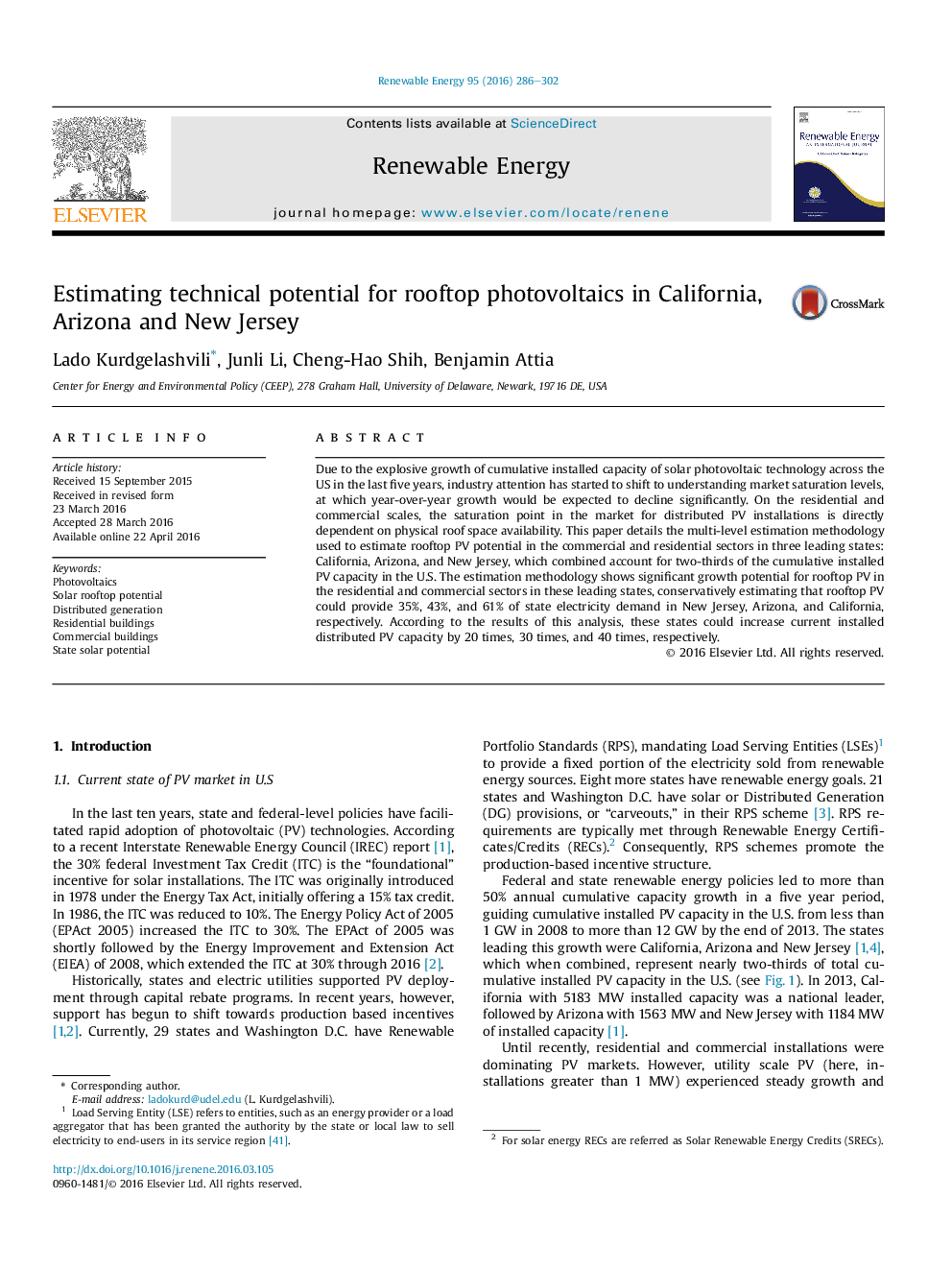| Article ID | Journal | Published Year | Pages | File Type |
|---|---|---|---|---|
| 299701 | Renewable Energy | 2016 | 17 Pages |
•Rooftop PV could provide 35, 43%, and 61% of electricity in New Jersey, Arizona, and California.•New Jersey, Arizona, and California could raise distributed PV capacity by 20, 30, and 40 times.•The residential sector has a predominant share of the total technical rooftop potential.
Due to the explosive growth of cumulative installed capacity of solar photovoltaic technology across the US in the last five years, industry attention has started to shift to understanding market saturation levels, at which year-over-year growth would be expected to decline significantly. On the residential and commercial scales, the saturation point in the market for distributed PV installations is directly dependent on physical roof space availability. This paper details the multi-level estimation methodology used to estimate rooftop PV potential in the commercial and residential sectors in three leading states: California, Arizona, and New Jersey, which combined account for two-thirds of the cumulative installed PV capacity in the U.S. The estimation methodology shows significant growth potential for rooftop PV in the residential and commercial sectors in these leading states, conservatively estimating that rooftop PV could provide 35%, 43%, and 61% of state electricity demand in New Jersey, Arizona, and California, respectively. According to the results of this analysis, these states could increase current installed distributed PV capacity by 20 times, 30 times, and 40 times, respectively.
